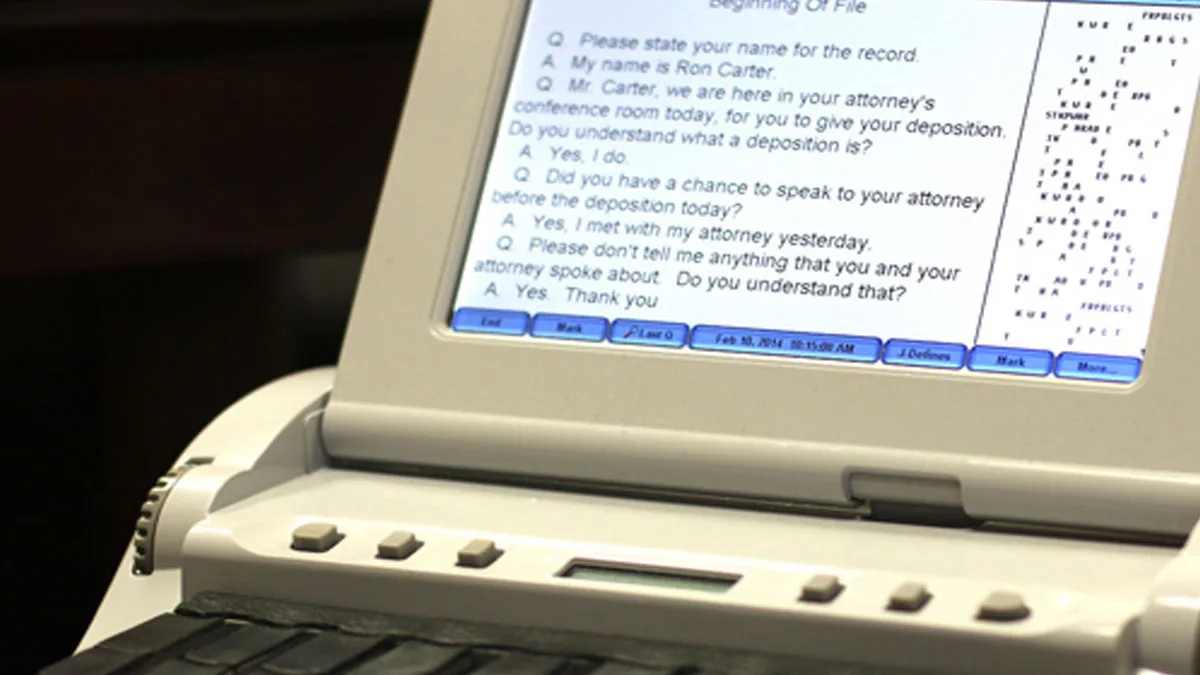Court stenography, an essential component of judicial proceedings, ensures an accurate and verbatim record of what transpires in court. This article explores the inner workings of court stenography, detailing the tools, processes, and the pivotal role stenographers play in the legal system.
Role of a Court Stenographer
A court stenographer, also known as a court reporter or shorthand reporter, is responsible for transcribing spoken words during court proceedings, depositions, and other legal meetings into written form. This transcription is crucial for creating official records, which may be used for appeals, legal referencing, and maintaining transparency in the judicial process.
Tools and Technologies Used
Stenotype Machine: The primary tool used by court stenographers is the stenotype machine. Unlike a standard keyboard, a stenotype has fewer keys because it operates on a system of shorthand. Stenographers press multiple keys simultaneously to produce syllables or words, allowing them to keep up with rapid speech.
Computer-Aided Transcription (CAT): This technology converts the shorthand notes taken on a stenotype into readable text. Stenographers can also use CAT to check their work in real-time, ensuring accuracy as proceedings unfold.
Voice Writing: An alternative to traditional stenotyping, voice writing involves the stenographer speaking into a voice silencer—a mask-like device that captures speech. The spoken input includes not only the dialogue but also annotations for non-verbal actions and gestures.
Training and Skills Required
Becoming a court stenographer typically requires completing a specialized training program, which can last from 24 to 48 months. These programs focus on:
- Speed and Accuracy: Trainees must achieve a minimum typing speed—commonly 225 words per minute—with high accuracy.
- Legal and Medical Terminology: A deep understanding of terminology ensures that transcripts are accurate and professional.
Certification, such as the Registered Professional Reporter (RPR) from the National Court Reporters Association (NCRA), is often required or highly recommended.
The Stenographic Process
During a court session, the stenographer sets up their equipment strategically in the courtroom to ensure clear hearing. As the proceedings commence, every spoken word is recorded verbatim. This process includes:
- Capturing Dialogue: All dialogue is transcribed, including statements from the judge, attorneys, witnesses, and others.
- Non-Verbal Actions: Descriptions of gestures or other non-verbal communications are also noted, as they may be relevant to the case.
After the session, stenographers may spend additional hours editing their transcripts for clarity and accuracy before submitting them as the official court record.
Challenges and Evolution
The field of court stenography faces challenges such as a nationwide shortage of qualified professionals and the rise of digital recording technologies. Despite these challenges, the demand for skilled stenographers remains high due to the unmatched accuracy they provide compared to automated systems.
Conclusion
Court stenography is a dynamic and vital part of the legal landscape, requiring a blend of technical skill, specialized knowledge, and swift precision. Its role in ensuring accurate legal records cannot be understated, making it an indispensable part of the judicial process.
References
- National Court Reporters Association (NCRA), https://www.ncra.org
- Federal Rules of Court Reporting, https://www.uscourts.gov









Leave a Reply